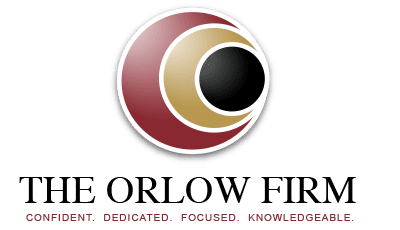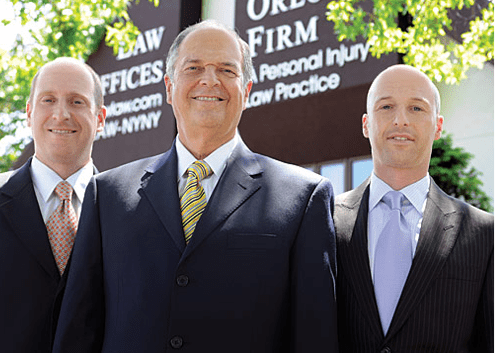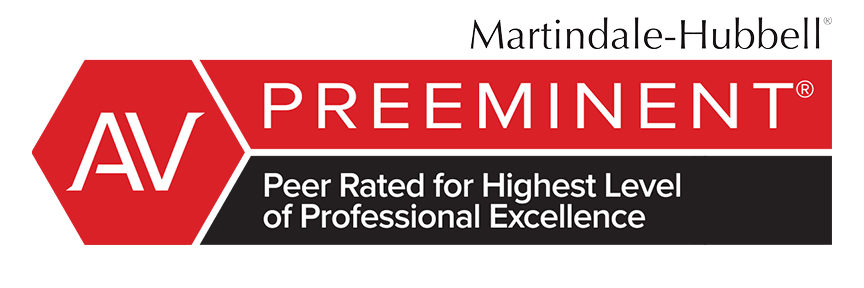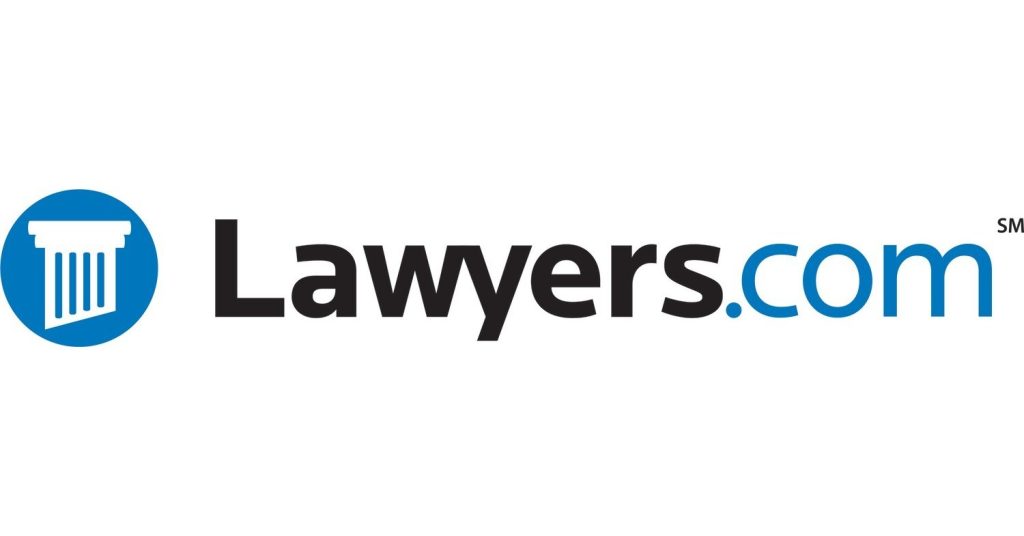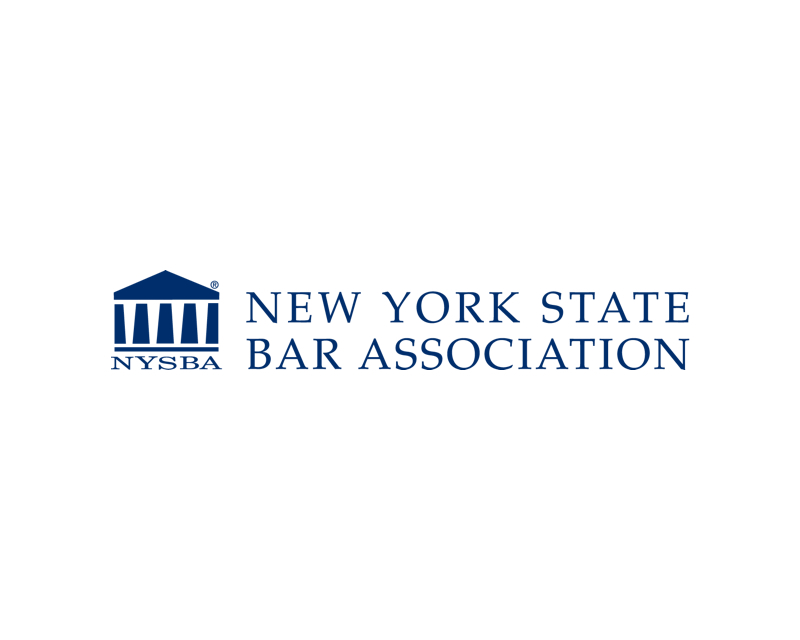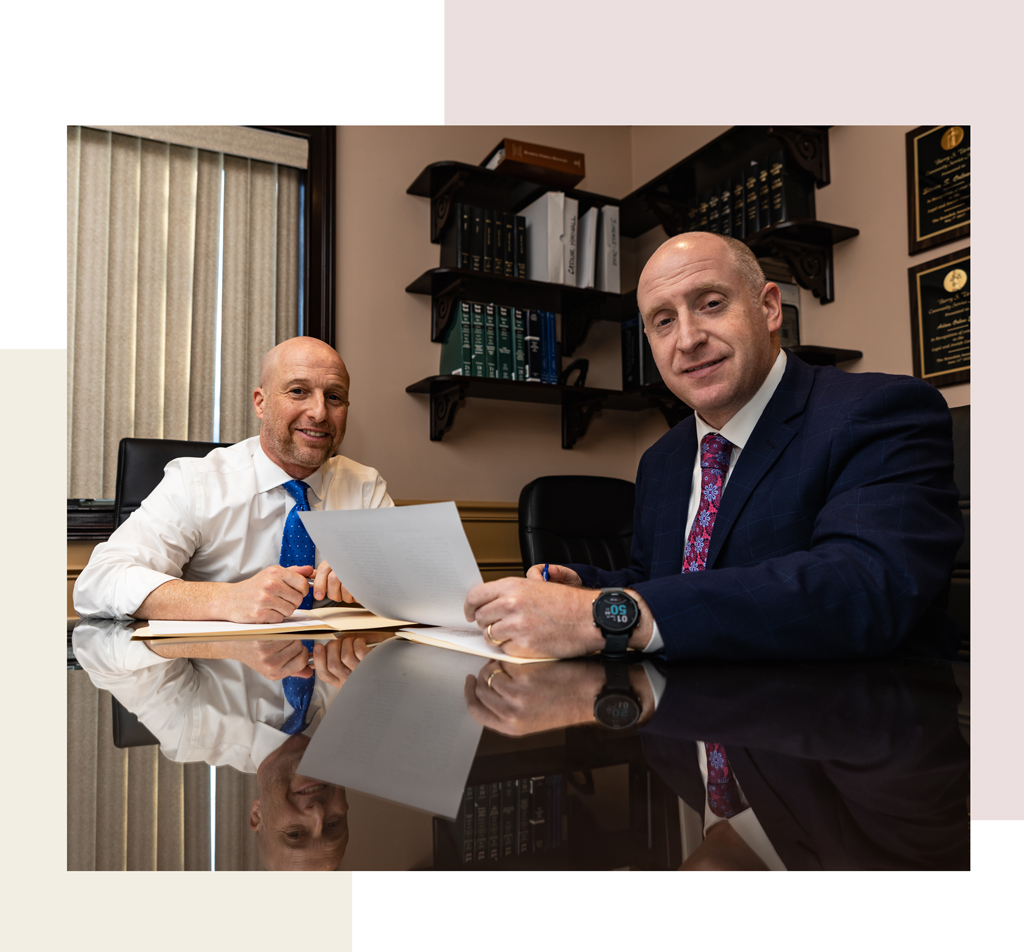The Following People Contributed to This Page
Cindy Cordova is a seasoned legal writer with over seven years of experience crafting clear, informative, and professional content for law firm websites. With a B.A. in English from Trinity Christian College, she combines her strong writing background with a deep understanding of legal topics to help firms connect with their clients through trustworthy and accessible content.
- September 19, 2025
What Is the Frye Standard and Why Does It Matter in New York Courts?
Quick Answer: The Frye standard is a legal test used to determine the admissibility of scientific evidence in court, specifically focusing on whether the underlying methodology is “generally accepted” within the relevant scientific community. In New York, the Frye standard is still the governing rule for assessing the admissibility of expert testimony based on scientific principles. This means that if a scientific technique or methodology is novel or not yet widely accepted, it may be excluded from evidence, even if it appears reliable.
Here’s a more detailed explanation of the Frye Standard:
- What It Is: The Frye standard, established in the 1923 case Frye v. United States, dictates that for scientific evidence to be admissible in court, the underlying methodology or principle must have gained “general acceptance” within the relevant scientific community. This standard places emphasis on the consensus among scientists in a particular field, rather than on the validity or reliability of a specific scientific conclusion. Essentially, if a technique is considered novel and not yet widely adopted by experts in the field, it may not be admitted as evidence, regardless of how compelling it might seem to a judge.
- Why It Matters in New York Courts: New York, along with a few other states, continues to apply the Frye standard, while many federal courts and some other states have adopted the more flexible Daubert standard. This means that New York courts must carefully evaluate the degree of acceptance that a scientific technique or methodology has within the relevant scientific community before admitting expert testimony based on it.
- Key Implications of the Frye Standard in New York:
- Protects Against Unreliable or Unproven Scientific Evidence: The Frye standard aims to ensure that only well-established and broadly accepted scientific methods are used in court. This serves as a safeguard against the introduction of unreliable or untested evidence that could unfairly prejudice the outcome of a case.
- Requires Careful Assessment of Scientific Consensus: New York courts often need to conduct a “Frye hearing” specifically to determine whether a scientific technique has gained general acceptance. This process can involve examining scientific literature, hearing testimony from qualified experts, and reviewing other relevant evidence to assess the scientific community’s consensus.
- Can Limit the Admissibility of Emerging Technologies: Because the Frye standard heavily emphasizes general acceptance within the established scientific community, it can be more challenging to introduce evidence based on newer or emerging technologies that have not yet achieved widespread acceptance or consensus within the scientific field.
In essence, the Frye standard is a crucial legal concept in New York courts that determines the admissibility of scientific evidence. By requiring general acceptance within the relevant scientific community, the standard aims to protect against the introduction of unreliable or unproven scientific evidence, ensuring fairness and accuracy in legal proceedings.
If you have questions about expert testimony in a personal injury case, or need guidance on your legal rights, call The Orlow Firm’s New York personal injury lawyers at (646) 647-3398 for a free consultation.
How Does the Frye Standard Work in New York Compared to Other States?
The Frye standard is the rule New York uses to decide if expert testimony can be used in court. This standard is different from what many other states use today. While some states have moved on to a newer rule called the Daubert standard, New York still follows Frye. Understanding this difference is important, especially if you have a legal case in New York City.
In simple terms, the Frye standard asks: Is the expert’s method or theory generally accepted by the relevant scientific community? If the answer is yes, the testimony may be allowed in court. If it’s not generally accepted, the judge may keep it out.
Here are key differences to know:
- New York uses Frye, not Daubert: Many states and federal courts use the Daubert standard, which looks at several factors like testability, error rates, and peer reviews. New York sticks with the Frye approach, which mainly focuses on general acceptance.
- Frye is more cautious: Because Frye focuses only on general acceptance, it tends to be stricter about allowing new or cutting-edge scientific methods. Daubert, by contrast, lets judges make a broader judgment about reliability.
- Judges in New York act more as gatekeepers: Under Frye, a judge’s main job is to decide whether the science is accepted in the field. In Daubert states, judges have more flexibility to allow newer methods if the science seems reliable, even if not widely accepted yet.
Example from New York City: Imagine a personal injury case where the plaintiff wants to bring in an expert to testify about a new brain scan technique. In New York, the judge would ask: “Is this brain scan method generally accepted in the medical field?” If doctors widely use and trust the method, the testimony may be admitted. But if it’s new and not well-established, it may not pass the Frye test — even if it seems promising.
Why does this matter for your case? If you’re involved in a personal injury, medical malpractice, or product liability case in NYC, expert testimony could play a key role. Knowing whether your expert’s opinion will be admitted under the Frye standard is crucial for building a strong case.
If you’re unsure how this standard might affect your case, The Orlow Firm can help. We can review the role of expert testimony and explain how the Frye standard may impact your legal strategy. Call us at (646) 647-3398 for a free and confidential consultation.
When Is Expert Testimony Allowed Under the Frye Standard in NYC?
In New York City, expert testimony is allowed under the Frye standard only if the science or method used by the expert is “generally accepted” in their field. This means the expert’s opinion must be based on knowledge or techniques that are widely used and trusted by other experts in the same discipline.
The Frye standard focuses on the process or methods the expert uses—not necessarily the expert’s personal credibility or the strength of their opinion. Judges in New York courts look at whether the expert’s approach has gained acceptance among other professionals in the same field, such as medicine, engineering, or forensics.
Expert testimony may be allowed under the Frye standard in NYC courts when:
- The expert uses a method that is commonly used by others in their profession. For example, an orthopedic doctor discussing commonly used treatment methods for broken bones.
- The technique has been tested and reviewed in published scientific journals or medical studies. This helps show that the method is reliable and accepted.
- The field itself recognizes the technique as valid. It doesn’t need to be accepted by every expert, but there must be a strong backing from the scientific or professional community.
In short, just having a degree or years of experience isn’t enough for an expert to testify in NYC. Their methods must pass the test of general acceptance as outlined by the Frye standard. If the judge finds that the method is still new, questionable, or not backed by enough professionals in the field, the expert’s testimony may be rejected.
For example, if an expert wants to use a new type of brain scan in a traumatic brain injury case, the court may first check whether the medical community views that technology as reliable. If most doctors and researchers are still skeptical, then the testimony may not be allowed under Frye.
This standard helps protect juries from hearing opinions based on unproven or fringe theories. It ensures that expert testimony in a New York court is grounded in trustworthy and established methods.
If you or a loved one is involved in a case where expert testimony may play a role—such as a personal injury or medical malpractice claim—it’s important to understand how Frye could affect your case. For guidance specific to your situation, contact The Orlow Firm directly at (646) 647-3398 for a free legal consultation.
What Types of Cases Use the Frye Standard in New York?
The Frye standard plays a key role in many types of court cases across New York State, especially in New York City. It comes into play whenever expert testimony is being used. This means a person with specialized knowledge—like a doctor, scientist, or engineer—must testify to help explain technical facts in a lawsuit. But not all expert opinions are allowed in court. Under the Frye standard, the court decides if the expert’s methods are accepted by most professionals in that field.
Here are some common types of cases where the Frye standard is often used in New York:
- Medical Malpractice: These cases involve claims that a medical professional made a serious mistake that caused harm. Expert testimony is often used to explain proper medical procedures or show how an error caused an injury.
- Personal Injury Lawsuits: In cases like slip and falls, car accidents, or construction accidents in NYC, expert witnesses may talk about how an injury happened or how serious it is. The Frye standard helps ensure their methods are reliable.
- Product Liability: If someone is hurt by a defective product, the court may hear from engineers or scientists. They explain how the product failed and why it was unsafe.
- Toxic Exposure Cases: These cases often involve chemicals, mold, or unsafe air. Scientists may be called to prove that the exposure caused a specific illness. The Frye rule ensures their science is generally accepted, not just a new or unproven idea.
- Criminal Cases: Frye is also used in criminal courts. For example, a court may need to decide if new types of DNA testing or psychological evidence should be allowed.
In each of these case types, the court uses the Frye standard to decide if the expert’s opinion is based on accepted science or methods. This helps keep court decisions fair and based on dependable information.
If you have a case in New York City and expert testimony may be involved, it’s important to know how the Frye standard could affect which evidence the court allows. For personal injury, medical malpractice, or wrongful death cases, this can have a big impact on the outcome.
If you have questions about expert witnesses or how the Frye rule might affect your case, call The Orlow Firm at (646) 647-3398 for a free, confidential consultation. We’re here to help you understand your legal options in clear, simple terms.
How Do NYC Judges Decide If Expert Evidence Is “Generally Accepted”?
In New York City courts, judges use the Frye standard to decide if expert evidence can be shown to a jury. Under this rule, expert testimony must be based on a scientific method or theory that is “generally accepted” by the relevant scientific or professional community.
This means judges are not focused on whether the expert is right or wrong. Instead, they look at whether the methods and ideas the expert uses are widely accepted by others in the same field.
What Judges Look At
When deciding if expert evidence meets the Frye standard, NYC judges often consider several factors:
- Scientific Acceptance: Has the method been tested and reviewed by other professionals?
- Widespread Use: Is the method regularly used by others in the same field?
- Research and Studies: Are there scientific articles, studies, or textbooks that support the method?
- Prior Court Rulings: Have other New York courts already accepted this type of expert testimony?
Judges may also listen to other experts during a special court session called a Frye hearing. These experts can help the judge understand whether the science behind the evidence is accepted in that field.
Example from NYC Courts
For example, in a medical malpractice case in New York City, an expert might want to testify about a new way to diagnose a certain illness. The judge would first need to decide if that method is accepted by most doctors in that specialty. If doctors are still debating it or it’s too new, the judge might rule that it doesn’t meet the Frye standard.
The Role of the Judge
Under the Frye standard, the judge acts like a gatekeeper. Their job is to make sure only reliable, accepted expert evidence is shown to the jury. This helps prevent unfair or confusing testimony that could mislead the jury.
It’s important to note that the Frye standard in New York focuses more on the method used than the conclusions the expert reaches. Even if the expert has a strong opinion, the judge won’t allow it unless the science behind it is generally accepted.
If you have questions about expert testimony or your rights in a personal injury case in New York City, call The Orlow Firm at (646) 647-3398 for a free consultation.
What Makes Some Expert Testimony Inadmissible Under the Frye Standard?
Under the Frye standard in New York, expert testimony may be ruled inadmissible if the scientific method or theory behind it is not “generally accepted” in that particular field. This means the court will only allow expert opinions based on ideas or techniques that the wider scientific community recognizes as valid and trustworthy.
In simple terms, it’s not enough for an expert to have a strong opinion. The expert’s methods must be widely accepted by other professionals in that same area of study. If not, the court may decide the testimony is unreliable and keep it out of the trial.
There are several reasons why expert testimony may not meet the Frye standard in New York:
- The method or theory is new or not well-tested : If an expert uses a new scientific process that hasn’t been widely studied or accepted, the court may not allow it as evidence.
- The scientific community disagrees about its use : Even if some experts support a method, if most do not use or trust it, the court may consider it too controversial.
- It relies too much on the expert’s opinion : The Frye standard focuses on the method, not the person. If the testimony is based mostly on the expert’s personal view rather than on proven science or data, it may be excluded.
- It lacks proper scientific support : If there are no peer-reviewed studies or research papers to back up the expert’s approach, the court may rule it inadmissible.
Example in NYC: Imagine a medical expert wants to testify in a Bronx courtroom that a certain scan proves a brain injury. If that type of scan is not widely accepted in the medical field for diagnosing brain trauma, the court might reject the testimony under the Frye standard—no matter how experienced the doctor is.
In New York courts, this rule protects juries from being misled by unreliable science. It ensures that only well-supported and trustworthy evidence reaches the courtroom. If you or a loved one is involved in a personal injury or medical malpractice case, understanding whether expert testimony will be allowed can play a big role in your case.
To learn more or to discuss your case, contact The Orlow Firm directly at (646) 647-3398.
How Is the Frye Hearing Used in New York Courtrooms?
A Frye hearing is a special court proceeding used in New York to decide whether expert testimony can be used in a trial. In New York courts, expert opinions must be based on scientific methods or theories that are generally accepted in their field. The purpose of the Frye hearing is to make sure that the science behind the expert’s opinion is reliable and not just a new or untested idea.
This hearing is often held before the trial begins. Either side—usually the defense or the plaintiff—can request it if they believe the expert’s methods are questionable. It’s common in personal injury, medical malpractice, and other complex civil lawsuits in NYC, where technical or scientific evidence can play a major role.
During a Frye hearing, the judge—not a jury—listens to evidence and arguments about the science behind the expert’s opinion. The focus is not on whether the expert has good credentials but rather on the method the expert used to reach their conclusion.
Here’s how the Frye hearing typically works in New York City courtrooms:
- A party challenges the expert’s method: One side argues that the expert used a theory or method that is not widely accepted in the scientific community.
- The judge reviews evidence: Both sides may present articles, studies, and testimony from other professionals to show whether the method is accepted or not.
- The judge makes a ruling: If the judge decides the method is not generally accepted, the expert testimony will not be allowed at trial.
The hearing often involves reviewing past court cases, scientific journals, and expert testimony. It is not about whether the testimony is persuasive or helpful, but whether it is based on sound, accepted science. That’s what sets the Frye standard apart and why it’s so important in New York cases.
For example, in a medical malpractice case, if a plaintiff’s expert says a certain test proves a doctor was negligent, the defense might request a Frye hearing. If the test is new or still debated in the medical field, the court may exclude that testimony.
Because personal injury claims often rely on expert doctors, engineers, or accident reconstruction specialists, Frye hearings can have a big impact. If expert opinions are thrown out, it may weaken a party’s case significantly.
Understanding how the Frye hearing works is important if you’re bringing or defending a case that requires expert testimony. It helps ensure that only trustworthy scientific evidence is presented to a jury.
What’s the Difference Between the Frye Standard and the Daubert Standard?
In the U.S., courts use two main standards to decide whether expert testimony is allowed: the Frye standard and the Daubert standard. New York, including New York City courts, still follows the Frye standard. Many other states and federal courts now use the Daubert standard instead. Although both standards aim to keep unreliable expert opinions out of court, they do so in different ways.
Here’s a basic breakdown of how the Frye and Daubert standards differ:
- Frye Standard: Focuses on whether the expert’s method or theory is generally accepted in the relevant scientific field.
- Daubert Standard: Gives the judge more control by evaluating if the method is scientifically valid and can be tested, peer-reviewed, and has a known error rate.
What Frye Means in New York:
In New York courts, under the Frye standard, expert testimony is only allowed if the theory or technique the expert used is generally accepted by the scientific community. The focus is not on whether the expert did everything correctly in the specific case, but whether the overall method is trusted by other professionals in that field.
For example, in a medical malpractice case in NYC, if a doctor wants to testify using a new diagnostic tool, the court will ask: “Is this tool widely accepted in the medical field?” If the answer is no, the testimony may be excluded.
How Daubert Works Differently:
The Daubert standard, used in federal court and many states outside New York, looks at multiple factors. These include:
- Can the expert’s method be tested?
- Has the method been peer-reviewed in journals?
- Does it have a known error rate?
- Are there standards to control its use?
- Is the method widely accepted (like Frye)?
Under Daubert, the judge acts as a “gatekeeper” and must weigh all these factors before allowing expert testimony. The judge has more discretion to decide what’s reliable, even if the scientific community hasn’t fully accepted it yet.
Why the Difference Matters in NYC Cases:
Because New York uses the Frye rule, it may be harder to introduce new or cutting-edge science in a courtroom. This can impact personal injury or medical malpractice cases where new technology or research is involved. For example, if someone wants to use brain scan data to show the impact of a head injury, that data must already be accepted by most neuroscientists—not just new or promising.
Summary: The key difference is that Frye looks at general acceptance in the field, while Daubert looks at scientific reliability. New York courts still follow Frye, which can limit the type of expert evidence allowed in your case.
If you’ve been injured and are dealing with expert testimony in your case, knowing which standard applies is important. For help understanding how the Frye standard might affect your situation, call The Orlow Firm at (646) 647-3398 for a free consultation.
Why the Frye Standard Matters in Personal Injury and Medical Malpractice Cases
The Frye standard plays a critical role in personal injury and medical malpractice cases in New York. These types of cases often rely on expert testimony—statements made in court by professionals like doctors or engineers. The Frye standard helps judges decide whether that expert’s opinion is reliable enough to be shared with a jury.
In these cases, expert witnesses may talk about things like:
- Whether a doctor’s actions met accepted medical standards
- How a product defect may have caused an injury
- The long-term effects of a traumatic brain injury
Under the Frye standard in New York, the court will ask: “Is this expert’s method or theory generally accepted by the right scientific or professional community?” If the answer is no, the judge usually won’t let the testimony be used.
This matters because in many personal injury cases, expert opinions can make or break a claim. Without reliable expert evidence, a case may be dismissed or seriously weakened. On the other hand, solid expert testimony can help prove key points and support a fair outcome for the injured person.
Here’s why the Frye standard matters in personal injury and medical malpractice cases across New York City:
- It protects fairness in court: Only expert opinions based on sound, widely accepted science are allowed. This helps prevent unproven or misleading testimony from entering the courtroom.
- It ensures quality evidence: Judges decide if the science behind the expert opinion is accepted in the relevant field before a jury hears it.
- It affects both sides of the case: Whether you are the injured person or defending against a claim, the Frye standard impacts what expert evidence can be used to support or oppose the case.
For example, imagine a malpractice case in Brooklyn where the doctor’s choice of treatment is called into question. The injured patient might use an expert to show that the treatment was outdated and not commonly used anymore. The doctor might have a different expert say the treatment was still accepted. Before either expert speaks at trial, the judge may hold what’s called a Frye hearing to decide if their opinions meet the standard.
In a personal injury case, like a construction accident in the Bronx, a safety expert might explain how a building code violation led to the injury. Again, that expert’s method and reasoning will need to pass the Frye standard to be allowed in court.
If you’re involved in a personal injury or malpractice case in New York City, this standard could directly impact your ability to present expert testimony. It’s one of the many legal steps that can affect the strength of your case.
If you have questions about how the Frye standard might apply to your situation, reach out to The Orlow Firm at (646) 647-3398 for a free legal consultation. We’re here to help you understand your rights and options under New York law.
Frequently Asked Questions About the Frye Standard in New York
- What is the Frye standard?
The Frye standard is a rule used in New York courts to decide if expert testimony can be shown to a jury. It asks whether the expert’s methods and opinions are “generally accepted” in the relevant scientific or professional community. In simpler terms, the science or technique must be widely trusted by other experts in that field. - Is the Frye standard used in all New York courts?
Yes. All state courts in New York, including those in New York City, follow the Frye standard when reviewing expert testimony. This includes personal injury cases, medical malpractice, and criminal trials. - How does a Frye hearing work?
A Frye hearing is a special court session held before trial. A judge listens to arguments from both sides. Experts may be called to testify about whether a certain theory, method, or test is accepted in their field. If the judge decides it’s not generally accepted, the jury will not hear that expert’s testimony. - What does “generally accepted” mean in a Frye hearing?
“Generally accepted” means most well-trained experts in that field agree that the science or method is valid and reliable. This doesn’t mean the method must be perfect—just that it’s trusted by a large part of the expert community. - What kinds of expert testimony does the Frye standard affect?
It applies to any expert opinion based on science, technology, or other fields requiring special knowledge. For example:- Medical professionals testifying about diagnoses or causes of injury
- Engineers explaining how a building or product failed
- Accident reconstruction experts describing how a crash happened
- Forensic specialists in criminal cases
- Can a judge keep out expert testimony if it’s not reliable?
Yes. In New York, even if the method is generally accepted, a judge may still keep it out if it isn’t clearly connected to the case or if the expert isn’t properly qualified. The testimony must also help the jury understand the issues involved. - What’s the difference between the Frye and Daubert standards?
Daubert is the standard used in federal courts and some other states. Under Daubert, judges play a more active role in deciding if the science is reliable. The Frye standard is simpler—it focuses only on whether the method is generally accepted, not on the judge’s opinion of its quality. New York uses Frye, not Daubert. - Why does the Frye standard matter in personal injury and medical malpractice cases?
Expert testimony is often key in these cases. For example, proving that a doctor made a mistake, or that a product caused an injury, usually requires input from professionals. If the science behind their opinion isn’t accepted under Frye, the testimony may be rejected. This can weaken your case. - Who decides if expert evidence passes the Frye test?
The judge makes this decision. It happens before trial, usually after a motion by one of the lawyers. Both sides can present evidence and expert opinions to support their position. - Do I need a lawyer to handle Frye issues?
These issues can be very technical. An experienced attorney can help you work with qualified experts and prepare for Frye hearings. If you’re in New York City and have a case involving expert testimony, consider speaking with a personal injury lawyer familiar with Frye challenges. For support, contact The Orlow Firm at (646) 647-3398.
Injured in NYC? Contact The Orlow Firm for a Free Legal Consultation
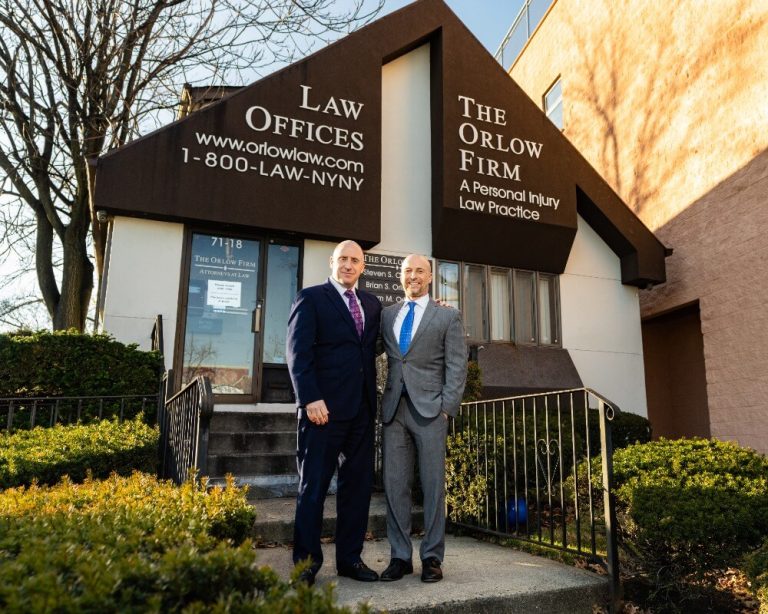
If you were injured in New York City and your case involves expert testimony, understanding how the Frye standard may affect your legal claim is important. In New York, courts only allow expert opinions if they are based on methods that are generally accepted in that expert’s field. This can play a big role in personal injury and medical malpractice cases, especially those involving scientific or technical evidence.
The Orlow Firm helps injured individuals and their families understand how the Frye standard might impact their cases. If your claim relies on expert testimony—such as a doctor explaining a medical mistake or an engineer describing how a building defect caused your injury—New York courts will likely review whether that testimony meets Frye’s requirements.
Here’s how we may be able to help:
- Analyze whether expert evidence will be needed: We work to identify if your case involves scientific, medical, or technical subjects that require expert opinion.
- Evaluate the strength of expert testimony: We assess whether the expert method or theory is accepted in the relevant field, as required by the Frye standard in New York.
- Prepare for a possible Frye hearing: If the defense challenges the expert testimony, we prepare arguments and documents needed to support its admissibility in court.
New York’s use of the Frye standard focuses on what the scientific community generally accepts. Unlike some other states that follow the federal Daubert standard, New York places more weight on traditional acceptance over newer but possibly valid approaches. This makes it even more important to present expert evidence that holds up under Frye review.
Whether you were hurt in a construction accident in Queens, a car crash in Brooklyn, or received improper medical care at a Manhattan hospital, the use of expert testimony under the Frye standard can be key to your case.
If you or a loved one has been injured in NYC and are unsure how expert evidence may affect your personal injury claim, call The Orlow Firm today at (646) 647-3398 for a free and confidential legal consultation. We are here to help you understand your rights and explore the legal options available to you.
The Following People Contributed to This Page
Cindy Cordova is a seasoned legal writer with over seven years of experience crafting clear, informative, and professional content for law firm websites. With a B.A. in English from Trinity Christian College, she combines her strong writing background with a deep understanding of legal topics to help firms connect with their clients through trustworthy and accessible content.
